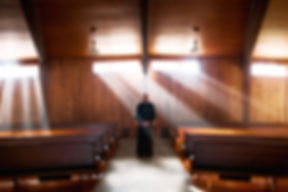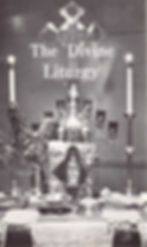

An Unusual Orthodoxy
Our Roots in Eastern Orthodoxy
St. Francis of the Woods is deeply influenced by the ancient Christian tradition of Eastern Orthodoxy, a faith that traces its origins back to the Apostles. Unlike most churches in Oklahoma, we are not Evangelical, Protestant, or Roman Catholic. Our history connects us to the theology and spirituality of the Eastern Orthodox Church, which emphasizes the mystical experience of Divine Truth and views salvation as a transformative process of union with God. This rich tradition has guided the faith of Christians since the early Church, influenced by the monastic practices of the Desert Fathers and Mothers and theological giants like the Cappadocian Fathers and Gregory Palamas. The sacraments, called mysteries, unite us to each other and the Creator in very real and mystical ways. The Liturgy, largely unchanged since the forth century, uses incense, candles, and icons, and is full of multilayered symbolism and meaning. Through this enduring heritage, we seek to embody the living expression of this ancient faith in a modern context.*
Eastern Orthodoxy in America
Orthodox Christianity arrived in North America through immigrant communities from various Orthodox traditions, creating a complex landscape of overlapping jurisdictions. In the 1920s, the American Orthodox Catholic Church (AOCC) was founded in an effort to unify these disparate groups. Under the leadership of Archbishop Aftimios Ofiesh, the AOCC sought to establish a unified Orthodox presence in America but faced opposition from established jurisdictions and internal struggles. Despite these challenges, the mission of the AOCC continued, and November 7, 1933, Bishop Sofronios, assisted by Metropolitan Theophan and Metropolitan Benjamin consecrated John Chrysostom (More-Moreno), an immigrant from the West Indies, who established the Church of the Redeemer, a predominantly Black congregation in Harlem. Tragically, in 1934, Bishop Joseph (Zuk) was murdered by poison, and later that same year, Bishop Sophronios retired from active church leadership due to health issues believed to be linked to assassination attempts ordered by Stalin.
After Bishop Sophronios’s retirement, Bishop John Chrysostom (More-Moreno) succeeded him as Primate. In 1951, the church was renamed the Eastern Orthodox Catholic Church in America (EOCCIA), continuing the vision of an authentically American, united Orthodox jurisdiction.
The EOCCIA: Continued Vision
In the 1950s, under Bishop John Chrysostom’s leadership, the EOCCIA continued its commitment to an Orthodox faith that was accessible to the American people. The church’s headquarters were initially located at the Cathedral of Our Savior in Manhattan, but the cathedral was sold to make way for the construction of Lincoln Center. The EOCCIA then relocated its headquarters to the Seminary of the Three Hierarchs in Florida, maintaining its mission and outreach. On June 22, 1958, Bishop John Chrysostom (More-Moreno) consecrated Gregory and his brother John R.C. Adair as Bishops in the EOCCIA. Later that year, Bishop John Chrysostom (More-Moreno) reposed in the Lord, and Bishop Gregory (Adair) succeeded him as Primate. By the 1970s, the EOCCIA had grown modestly, with clergy, congregations, and a strong focus on creating an Orthodox presence that resonated with the diverse and evolving landscape of America.
St. Francis of the Woods: Church as Poustinia
In 1978, Bishop John Adair, inspired by the Russian concept of poustinia—a place of retreat and silence—envisioned a sanctuary for spiritual renewal. Together with his wife, Kay Kerr, he founded St. Francis of the Woods as an expression of this vision. While our priests often come from the EOCCIA, St. Francis of the Woods operates as an independent ecumenical nonprofit. We embrace the theology and spirituality of the Eastern Orthodox tradition while remaining open to all who seek rest, renewal, and communion with the Divine.
A Sacred Space for All
At St. Francis of the Woods, we honor our roots in Eastern Orthodoxy, but our mission transcends labels. We offer a welcoming space for those seeking to live “The Way”—in communion with each other, the earth, and the Divine.
*For more on the Eastern Orthodox Church or its theology, check out The Orthodox Church or the The Orthodox Way by Timothy Ware (Metropolitan Kallistos) - we have a them in the Cimarron Heights Library. For more information about the EOCCIA, visit eoccia.org



Eastern Orthodox Catholic Church in America

The Divine Liturgy

The Sign of the Cross

Order of Confession

Orthodox Iconography
